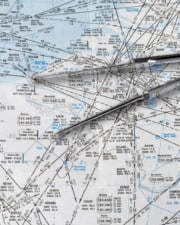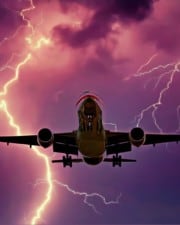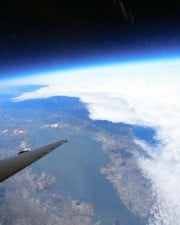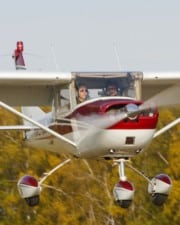If you’ve ever spent any time around airports, especially General Aviation ones, you’ll probably have noticed aircraft come into land, briefly touch the runway before taking off once again. This maneuver is known as touch & go landing.
Table of Contents
A rapid combination of two maneuvers, a touch & go landing involves the landing and immediate take-off of an aircraft without stopping or exiting the runway. There are many reasons a pilot may perform a touch and go landing.
It may sound dangerous, which it isn’t, assuming it’s performed correctly.
What is a Touch & Go Landing?
Getting your head round touch & go landings is something that stumps many new pilots – it did for me when I was learning to fly. It not that it’s difficult, but precisely the opposite: it’s so straight forward.
When most other aviation terms are so complicated, the relative simplicity of touch and go landings often sees trainee pilots fret as they always feel they are missing something.
But it is truly as simple as it sounds. You line up your approach, begin your descent, go to touch down before increasing the power and pulling back the throttle to take off again.
Why is a Touch & Go Landing Performed?
Pilots (usually) do not perform touch and go just for the fun of it. It is one of those flight training operations that come in handy when you most need it. To that effect, these are some of the important reasons why a touch & go landing is carried out.
1. Practice Landing Technique & Procedures
For most pilots, if not all, this is the main reason they performed a touch and go landing. Although there isn’t any part of flying an aircraft that can be categorized as easy, configuring and executing the landing of an aircraft is no easy feat.
Student pilots are expected to practice landing until it becomes second nature or instinctive. To accumulate and practice flight landing hours, pilots have to use this maneuver effectively.
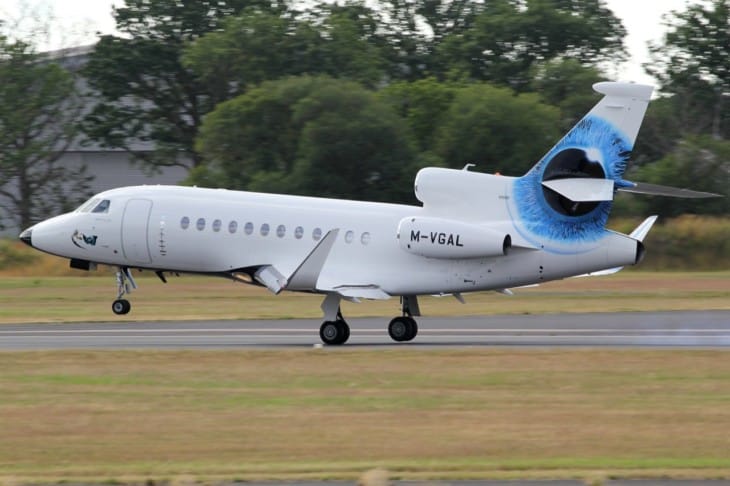
By approaching a runway during flight, the pilot begins to practice his landing. Immediately the aircraft touches the ground, touch and go landing allows the pilot to take off and make a repeat of the landing practice. Simply put, the pilot has more practice hours.
2. Maximize Cost And Time
Controlling and manipulating airliners with an average weight of about 40 tonnes is no easy task. Normally, when an aircraft makes a successful touchdown, it has to come to a stop. Afterward, it has to exit the runway to clear it for a possible landing of another aircraft.
All of these would require a significant amount of aviation fuel to execute. It would have to repeat the reverse steps and taxi itself back on the runway to ready the aircraft for another take-off. Not only is the aircraft expending fuel, but a lot of valuable time is also wasted.
A touch and go landing helps maximize cost and time for both the airliner and the pilot.
3. Satisfy The 90-Day Rule
As a licensed pilot, there are minimal requirements put in place by aviation authorities like the FAA. One of such rules is that for a pilot to be in command of an aircraft with at least a passenger, the pilot must have made three takeoffs and three landings within the past 90 days.
Outside meeting the other requirements, requiring pilots to make a minimum of three takeoffs and landings helped ensure the pilot’s always had current expertise in handling an aircraft.
As far as aviation authorities like the FAA were concerned, it’s safer to have a pilot commanding an aircraft with 200 flight hours in the past month than one with 5,000 flight hours in the last year.
One of the ways to satisfy this rule is by performing a touch and go landing. However, for example, a touch and go landing done three times can only satisfy the 90-day rule when done on an aircraft that is not conventionally configured like tailwheel aircraft.
Passenger aircraft are a perfect example of aircraft that can be used to satisfy the rule with a touch and go landing.
4. Aborted Landing
Most airline passengers are not aware that pilots make intuitive decisions during landings and take-offs. One of the top qualities of an experienced pilot is situational awareness.
Most of the information being fed to the pilot from the air control tower is done by highly qualified humans, but humans notwithstanding. Like with all things human, we are all susceptible to making mistakes. Although highly frowned at in the aviation world, it can still happen.
Pilots are equipped with the knowledge and mental capacity to make an aborted landing by engaging and performing touch and go landing. Anything can cause a pilot to abandon a planned landing.

In busy airports where aircraft are scheduled for takeoffs and landings between minutes, an aircraft can be mistakenly positioned on the wrong runway. As a result, obstacles like debris and animals could enter the runway at the last minute.
The onus is on the pilot to immediately make an aborted landing by reconfiguring for a takeoff.
Wrong landing calculations and a short runway are yet another reported reason why pilots have and can make an aborted landing.
Conditions Necessary For Touch & Go Landing
The importance of knowing and practicing the touch and go landing cannot be overemphasized. However, to be safely executed, the pilot has to ensure that certain conditions are met.
Can student pilots do touch and goes? As a student pilot or a seasoned professional, these are the requirements and conditions to perform a touch and go landing effectively.
1. Length of The Runway
When performing a touch and go landing, you’re attempting to achieve two separate maneuvers successfully. First, aircraft naturally need an ample amount of space to land. Although there will be no stopping, you’ll need your tires to make contact with the runway and make a run for the takeoff.
Do not attempt a touch and go landing in an airport with a seemingly short runway. You’ll be better off coming to a stop (stop and go) than attempting an immediate takeoff.
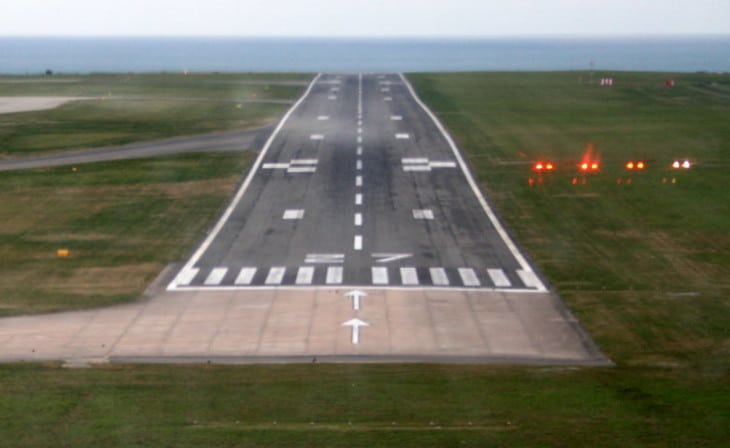
2. Request For Clearance
While it may seem like a quick exercise, airports have flight schedules that air control takes seriously. To perform a touch and go landing, you’ll need clearance for both landing and takeoff.
Communicate your intentions to the airport’s air control at a reasonable time before approaching the runway. If you are only able to secure clearance for landing, you’ll violate airport’s airspace laws if you immediately perform a takeoff.
3. Are You Qualified?
One of the first attempts at a touch and go landing for many pilots is during flight training. You must have a CFI (Certified Flight Instructor) on board when you perform the maneuver.
As an experienced pilot, if you haven’t practiced the touch and go landing since flight school, chances are you’ll need a significant amount of intuition and control to deliver. It is why requirements like the 90-day rule were put in place.
Make regular practice as often as possible with a CFI. Do not attempt a touch and go landing if you do not have the needed expertise or confidence.
Pilots are trained to have situation awareness as they approach and land the aircraft. The configurations for landing and takeoff are different. Pilots have to reconfigure the aircraft for takeoff as soon as the aircraft touches the runway.
4. Wind Conditions
Wind plays an important role in flying an aircraft. If there was ever any doubt about this, the number of instruments designated to monitor wind is proof enough.
Student pilots should only perform touch and go landing in light wind conditions. Only experienced pilots can attempt to do the maneuver in heavy wind conditions and only when necessary.
The same goes for performing the maneuver in a crosswind. Outside practice training, touch and go should be a last resort for any pilot.

5. Condition of The Runway
With the length of the runway already taken into consideration, its condition will determine if touch and go landing can be carried out. The maneuver cannot and should not be made on a soft field.
You’ll be better off performing a stop and go than a touch and go landing for safety reasons. Another aspect of the condition of the runway is contaminants.
With all other conditions met, you still should not perform a touch and go if there are obstacles on the runway. No matter how skilled the pilot may be, as little as a nail can cause a total loss of aircraft control.
Related Posts


